Bacterial Vaginosis (BV): Definition, Cause, Symptoms, Diagnosis, Risk Factors and Treatment

Related products
Bacterial Vaginosis (BV) Overview
Bacterial Vaginosis (BV) is a common vaginal condition caused by an imbalance in the natural bacterial flora of the vagina. While a healthy vagina typically contains a balance of various bacteria, BV emerges when there is a significant reduction in the Lactobacillus species and an overgrowth of other types of bacteria. The imbalance can lead to symptoms such as unusual vaginal discharge, odour, itching, and burning. The exact cause of BV is not always clear, but factors like douching, new or multiple sexual partners, and antibiotic use increases its risk. BV is diagnosed through a medical examination and specific lab tests.
Vaginitis, inflammation of the lining inside the vagina, sounds like the culprit. But vaginitis — which can also include vaginal odor and soreness inside and around the vagina and vulva — is an umbrella term encompassing several distinct conditions that inflame or infect the vagina, all with different causes and treatments, as explained by Dr Toni Golen, Editor in Chief, Harvard Women's Health Watch and Harvard Health Publishing.
While not always harmful, if left untreated, BV potentially leads to more serious health issues. Fortunately, it can be treated with antibiotics. It's essential for women to be aware of BV and seek medical advice if they experience symptoms, ensuring their reproductive health remains uncompromised.
What is Bacterial Vaginosis?
Bacterial Vaginosis, abbreviated as BV, frequently occurs as a vaginal infection resulting from unusual bacterial overgrowth within the vaginal region, disrupting the natural bacterial ecosystem present. The standard bacterial ecosystem mainly comprises species of Lactobacillus, aiding in sustaining a marginally acidic pH, and deterring the proliferation of harmful microorganisms. In instances of BV, a notable depletion of Lactobacillus levels occurs, coupled with an escalated growth of alternative bacterial varieties.
The precise causative factors of BV remain unclear yet are linked to elements such as engaging in sexual activities, practices of vaginal douching, and utilisation of intrauterine apparatus. Manifestations of BV often encompass issues like vaginal excretions, unpleasant odour, and irritation, albeit some individuals exhibit no symptoms. The diagnostic process predominantly involves meticulous scrutiny of vaginal secretions and employment of other diagnostic standards like Amsel's Criteria.
Addressing BV is imperative due to its potential to precipitate severe health issues such as pelvic inflammatory disorders, unfavourable outcomes during pregnancy, and heightened vulnerability to infections transmitted through sexual contact. Therapeutic interventions commonly entail the deployment of antibiotic medications like metronidazole or clindamycin, aiming to reinstate the customary vaginal bacterial ecosystem and mitigate symptomatic distress. It is prudent for persons suspecting a BV infection to pursue medical consultation for precise diagnostic procedures and remedial measures.
What Is the Cause of Bacterial Vaginosis?
The precise origin of Bacterial Vaginosis (BV) remains elusive, though it mainly originates from a disruption in the vaginal microbial ecosystem. Various elements contribute to this microbial imbalance. Here are some linked aspects:
Sexual Interactions
The emergence of Bacterial Vaginosis (BV) is often linked to sexual interactions, though the exact dynamics are yet to be thoroughly decoded. Partaking in sexual encounters, notably with several partners or a new partner, has the potential to modify the vaginal microbial composition, ensuing in a disturbance in the bacterial equilibrium within the vaginal milieu. Typically, the vaginal microbial composition is chiefly constituted by Lactobacillus species, instrumental in sustaining a mildly acidic pH, thereby furnishing a natural barricade against the encroachment of pathogenic bacterial species.
Upon indulgence in sexual interactions, particularly unprotected engagements, there is a likelihood for the inception and conveyance of varied bacterial strains amidst partners. This microbial interchange unsettles the prevalence of Lactobacillus species, resulting in a diminution of the vaginal environment's acidity. The subsequent heightened pH fosters a favorable ambiance for the expansion of anaerobic bacteria, eventually culminating in the manifestation of BV.
Moreover, the alkaline characteristic of seminal fluid, when introduced into the vaginal milieu during sexual interactions, has the potential to momentarily modify the vaginal pH, thereby amplifying the possibility of bacterial imbalance. This modification pave the way for non-indigenous and potentially hazardous bacterial species to thrive, causing symptomatic expressions of BV. Additionally, sexual conducts like receptive oral engagement or the communal usage of sexual gadgets without adequate sanitation usher new bacterial species into the vaginal milieu, thereby escalating the BV risk.
It is imperative to acknowledge that, despite the association between sexual interactions and BV, it is not categorised as a sexually transmitted infection (STI). Besides, BV manifest in persons devoid of sexual activity. Consequently, the correlation between sexual interactions and BV is intricate and multi-dimensional, necessitating more investigative endeavours to unveil the foundational dynamics and to devise efficacious preventative methodologies. Persons apprehensive about BV or those manifesting symptoms are encouraged to seek medical counsel for precise diagnostic evaluations and suitable remedial actions.
Douching
Douching denotes the act of washing or flushing the vagina using water or various liquid concoctions, frequently infused with antiseptics or aromatic substances. The act of douching is linked to a heightened risk of Bacterial Vaginosis (BV) due to its ability to unsettle the inherent microbial habitat of the vagina. Generally, the vaginal habitat is overseen by Lactobacillus species, which plays a pivotal role in sustaining a mildly acidic pH and is essential for thwarting harmful bacterial entities' expansion. Douching has the capability to modify this fragile pH equilibrium and lessen the count of safeguarding lactobacilli, thereby paving the way for the rampant growth of detrimental bacteria, culminating in BV.
The turbulence in the vaginal flora instigated by douching fosters a welcoming environment for the multiplication of anaerobic bacteria, often correlated with the emergence of BV. Additionally, the mechanical process of douching thrust bacteria into the higher reproductive tract, intensifying the peril of infection and other negative reproductive health repercussions. Moreover, specific individuals opt for douching as a counteraction to vaginal indications, like discharge or odor, oblivious that this act worsen these indications and trigger a repetitive cycle of BV infections. The chemicals and scents in some douching commodities incite irritation and an inflammatory reaction, which sequentially undermine the vaginal mucosal barriers, simplifying the pathway for harmful bacteria to initiate an infection.
Considering the potential hazards of douching, numerous healthcare experts discourage this act and advocate for the vagina to uphold its natural cleanliness via regular bathing and hygiene routines. It is prudent to pursue medical advice instead of venturing self-treatment through douching for individuals enduring vaginal unease or other indications hinting at BV or any different vaginal infection. The healthcare practitioner offers a precise diagnosis and recommend suitable treatment strategies to reinstate the normal vaginal flora and alleviate symptoms.
Intrauterine Devices (IUDs)
Intrauterine Devices (IUDs), a method of extended yet reversible contraception, are placed within the uterus to avert pregnancies. An associated peril of Bacterial Vaginosis (BV) is noted with IUD utilisation, though the precise mechanism remains elusive. Inserting an IUD disturb the inherent bacterial equilibrium in the vagina and uterus. The usual vaginal flora mainly comprises Lactobacillus species, maintaining a mildly acidic milieu, thwarting the rampant growth of harmful bacteria. Nevertheless, the physical entity of an IUD potentially modifies this fragile balance, fostering an environment more hospitable for the escalation of detrimental bacteria, culminating in BV.
Moreover, inserting or extracting the IUD potentially usher new bacterial species or propel prevailing vaginal bacteria deeper into the reproductive tract, disrupting the microbial habitat and possibly triggering the onset of BV. Additionally, the strings of the IUD, extending into the vaginal area, act as a pathway for bacteria, aiding their transition into the uterus, thereby escalating the infection risk.
Furthermore, some indication suggests that menstrual blood accumulation around the IUD contribute to bacterial amplification and the ensuing development of BV, especially if there is a delay in the natural expulsion of menstrual blood.
It is critical to acknowledge that although an association between IUD utilisation and BV exists, numerous individuals employ IUDs without encountering BV, and the contraceptive advantages of IUD usage frequently surpass the risks for many individuals. Medical professionals typically offer extensive counselling regarding IUD utilisation's potential perils and benefits and propose regular monitoring for BV and other infections. Must an individual utilising an IUD develop BV, suitable antibiotic intervention generally manages the condition effectively. Nevertheless, any apprehensions regarding IUD utilisation and its link to BV must be deliberated with a healthcare professional to ensure a well-informed verdict and appropriate reproductive health management.
Antibiotic consumption
Antibiotic consumption is a significant factor correlated with the emergence of Bacterial Vaginosis (BV), chiefly due to its effect on the vaginal microbial landscape. Antibiotics, although proficient in abolishing pathogenic bacteria causing infections, often exhibit a broad-spectrum action, eliminating beneficial bacteria alongside detrimental ones. The vaginal milieu is typically overseen by Lactobacillus species, which are pivotal in sustaining a mildly acidic pH and inhibiting the proliferation of harmful organisms. Upon antibiotic administration, especially broad-spectrum types, there is a significant reduction in the protective lactobacilli population, thereby unsettling the natural bacterial balance of the vagina.
This disturbance creates a more favourable arena for the overgrowth of diverse bacterial types, including anaerobic bacteria commonly linked with BV. The resulting bacterial disequilibrium or dysbiosis manifests as BV, displaying symptoms such as unusual vaginal discharge, odour, and occasionally discomfort. Moreover, repeated or extended antibiotic consumption intensifies the BV risk as it induces repeated or prolonged disruption to the natural vaginal flora, complicating the re-establishment of beneficial lactobacilli dominance in the vaginal milieu. The reduced lactobacilli count and alter vaginal pH simplify pathogenic bacteria's thriving and BV's development or recurrence.
Individuals must comply with prescribed antibiotic regimens and refrain from self-medication with antibiotics. Additionally, healthcare practitioners suggest probiotic supplements or other strategies to restore the natural vaginal flora post-antibiotic treatment. Individuals facing recurrent BV or those worried about the impact of antibiotic consumption on their vaginal health must initiate a dialogue with their healthcare provider to explore alternative treatment pathways or supportive strategies to mitigate BV risk and preserve a healthy vaginal environment.
Hormonal Changes
Hormonal alterations are identified to influence the vaginal milieu and be contributory to the emergence of Bacterial Vaginosis (BV). The vaginal ecosystem is finely balanced, primarily sustained by Lactobacillus species, flourishing in the mildly acidic surroundings engendered by oestrogen-driven glycogen generation. Upon degradation, glycogen nurtures a conducive setting for lactobacilli and assists in preserving an acidic vaginal pH, inhibiting the proliferation of pathogenic entities. Nonetheless, variations in hormonal concentrations, especially oestrogen, unsettle this equilibrium and possibly trigger BV.
Various scenarios illustrate hormonal variations affecting the vaginal flora. For example, hormonal levels vary throughout menstrual cycles, and the vaginal pH shift towards alkalinity, potentially disturbing the vaginal flora. Likewise, during perimenopause and menopause, dwindling oestrogen levels result in glycogen reduction, consequently modifying the vaginal pH and bacterial equilibrium, rendering individuals more prone to BV. Moreover, hormonal adjustments during gestation impact the vaginal milieu; however, the correlation between hormonal modifications during gestation and BV is intricate and encompass other elements.
Furthermore, using hormonal contraceptives have a part in BV emergence. Some research indicates a correlation between hormonal contraceptive employment and modified vaginal flora, though the evidence is inconsistent.
It is crucial to grasp that while hormonal adjustments influence the vaginal milieu and contribute to BV, they represent several factors that contribute to the condition. Individuals apprehensive about potential BV or concerned regarding how hormonal modifications impact their vaginal health must engage with healthcare experts. They offer precise diagnosis and propose suitable management approaches, including hormonal therapies, lifestyle adjustments, or other interventions to reinstate and sustain a wholesome vaginal environment.
What does Bacterial Vaginosis look like?
Bacterial Vaginosis (BV) unveils itself as a modification in the vaginal milieu, marked by an upheaval in bacterial equilibrium. The customary vaginal flora chiefly consists of Lactobacillus species crucial for upholding a mildly acidic pH, forging a setting hostile to detrimental bacteria. However, amid BV, a dip in Lactobacillus density occurs alongside a surge of other bacterial kinds like Gardnerella vaginalis and Mobiluncus species.
A standout symptom of BV is vaginal discharge, varying in consistency among different individuals but often described as slender and either grey or white in hue. In certain instances, a yellowish tint is apparent. The discharge's consistency tends to be watery, and its volume amplify post-sexual activity or during menstrual periods. This altered discharge frequently serves as the initial discernible indication of BV for numerous individuals. Moreover, a distinct odour often accompanies BV. This odour is frequently called "fishy," intensifying after sexual engagement or amid menstruation. It is pivotal to recognise that not every individual with BV will perceive this odour, and its intensity significantly diverge among those who do.
Besides the modified discharge and odour, some individuals with BV encounter itching in the vaginal vicinity or a burning sensation during urination, though these symptoms are less prevalent. It is feasible for individuals to harbour BV without manifesting any symptoms, rendering self-diagnosis challenging.
The therapeutic approach to BV predominantly entails administering antibiotics like metronidazole or clindamycin to rejuvenate the normal vaginal flora and alleviate symptoms. Adhering to the outlined treatment regimen is crucial, as neglecting BV treatment triggers grave health issues like pelvic inflammatory disease, unfavourable pregnancy outcomes, and heightened vulnerability to sexually transmitted infections.
Bacterial Vaginosis is characterised by a transformation in vaginal discharge, often accompanied by a distinct odour. The visual and aromatic indications and microscopic evaluation of the vaginal discharge are instrumental in diagnosing BV. It is imperative for individuals exhibiting symptoms of BV to seek proficient medical assessment and comply with the prescribed treatment to avert potential complications and re-establish vaginal well-being.
Can BV Affect Menstrual Cycle?
The interplay between Bacterial Vaginosis (BV) and menstrual phases is intricate and yet to be fully unravelled. Nonetheless, it has been acknowledged that numerous physiological and microbial transitions transpire in the vaginal milieu throughout the menstrual phases, potentially interacting with the bacterial disequilibrium observed in BV.
Hormonal ebbs orchestrate menstrual phases and flows, specifically estrogen and progesterone. These hormones modulate the vaginal setting, encompassing its pH level and the composition of its microbial populace. A wholesome vaginal flora chiefly comprises Lactobacillus species, instrumental in sustaining a mildly acidic pH, inimical for the proliferation of pathogenic entities.
As the menstrual cycle progresses, especially during the follicular stage with escalating oestrogen levels, glycogen synthesis in vaginal epithelial cells amplifies. Subsequently, enzymes break down glycogen into essential sugars, nourishing Lactobacillus species. These advantageous bacteria ferment the sugars, generating lactic acid, which upholds the vaginal acidity crucial for thwarting pathogenic bacterial expansion.
Contrarily, in scenarios of BV, the customary Lactobacillus-driven flora is unsettled, and other, more alkaline-resilient bacteria take over, elevating the vaginal pH. This modified bacterial composition intensifies during menstruation when the vaginal pH naturally ascends due to the alkaline characteristic of menstrual blood. Moreover, menstrual phases potentially sway the vaginal immune response. Hormonal fluctuations throughout the menstrual cycle modulate immune functionality, possibly impacting the host's reaction to bacterial escalation in BV. Additionally, some evidence hints at individuals possibly undergoing a temporary exacerbation of BV symptoms post-menstruation, potentially attributed to the influx of menstrual blood into the vaginal setting, which destabilises the already delicate bacterial equilibrium in individuals with BV.
Nevertheless, the direct effect of BV on menstrual phases remains ambiguous. BV induce vaginal symptoms, easily mistaken for menstrual cycle anomalies, such as spotting or unusual discharge. Theoretically, the inflammatory reaction incited by BV interact with hormonal signalling or endometrial functionality, though the mechanisms necessitate further clarification.
Despite the recognised interaction between the vaginal microbiome and hormonal variations across menstrual phases, the precise impact of BV on menstrual phases demands additional exploration. The sophisticated interaction among hormonal, microbial, and immune elements render this a challenging research domain. Individuals enduring recurrent BV or menstrual inconsistencies must consult healthcare professionals for precise diagnosis and adept management.

What Are the Symptoms of Bacterial Vaginosis?
The symptoms of Bacterial Vaginosis include vaginal discharge, odour, itching, burning sensation, vaginal irritation, pain during sex, spotting, increased discharge, discharge stickiness, and vaginal redness.
Vaginal Discharge: The emblematic symptom of Bacterial Vaginosis (BV), vaginal discharge, portrays a shift from the usually slightly acidic vaginal pH maintained by Lactobacillus dominance. BV ushers in bacterial overgrowth like Gardnerella vaginalis and Mobiluncus species, upsetting this equilibrium and altering the discharge noticeably.
Individuals with BV often experience a metamorphosis in discharge colour, consistency, and quantity. Commonly, it turns thin, greyish-white or occasionally yellow, with a watery or milky consistency. An uptick in discharge amount, especially post-coitus or during menstruation, is common, often marking the initial sign of BV for many. The BV-associated discharge carries a unique, "fishy" odour, intensifying post-coitus or during menstruation due to semen's alkaline nature and menstrual blood, further disrupting the fragile bacterial balance. The discomfort and potential embarrassment from altered discharge significantly impact life quality, driving individuals towards medical consultation.
Diagnosis of BV leans heavily on vaginal discharge examination. Microscopic analysis reveals clue cells and a reduced Lactobacillus presence, indicative of BV. Amsel's criteria or Nugent Score further assist in BV diagnosis based on vaginal discharge properties alongside other clinical indicators.
Odour: A marked symptom of Bacterial Vaginosis (BV) is an unpleasant, "fishy" odour, especially noticeable post-coitus or during menstruation. The odour emanates from the overgrowth of bacteria like Gardnerella vaginalis and Mobiluncus species, producing amines exuding a fishy smell in alkaline conditions.
The decline of Lactobacillus species in BV disrupts the normal acidic vaginal pH, paving the way for anaerobic bacterial overgrowth. These bacteria release volatile amines like trimethylamine, which, upon contact with alkaline substances like semen or menstrual blood, emit a pronounced fishy odour. This odour evokes emotional distress and embarrassment, affecting self-esteem and intimate relationships. Individuals become self-conscious, especially in social or intimate scenarios, potentially delaying medical care seeking despite its importance for accurate diagnosis and effective treatment. Treatment usually entails antibiotics like metronidazole or clindamycin, targeting anaerobic bacterial eradication and reinstating the natural Lactobacillus-dominated flora. Successful treatment typically resolves the unpleasant odour, enhancing the individual's life quality. Hence, medical attention and treatment adherence are crucial for symptom resolution and life quality improvement in BV sufferers.
Itching: Itching, or pruritus, though less common than abnormal discharge or odour in Bacterial Vaginosis (BV), arises from bacterial overgrowth disrupting the typical vaginal flora. The dominance of Lactobacillus species in a healthy vagina maintains an acidic pH, disrupted in BV, elevating the vaginal pH.
This disruption irritates the sensitive skin and mucous membranes of the vagina and vulva, inducing itching. The itching localises to the vaginal opening or extend to the surrounding vulvar area, ranging from mild to severe, causing considerable discomfort.
The vicious cycle of irritation ensues from itching. Scratching to alleviate itchiness further irritate or create small skin tears, becoming more infection-prone or irritation-susceptible, exacerbating the discomfort. Moreover, other BV symptoms like abnormal discharge and odour further irritate the skin, potentially intensifying the itching sensation. Specific symptom-alleviating product usage like over-the-counter creams or home remedies worsen the irritation if unsuitable for sensitive vaginal tissue.
Individuals with itching must seek medical attention, especially if accompanied by other BV symptoms. Accurate diagnosis and an appropriate treatment plan from a healthcare professional, typically involving antibiotics to address bacterial overgrowth and restore natural vaginal flora, help alleviate itching and other BV symptoms. Prompt medical care and treatment adherence are crucial for discomfort alleviation and preventing BV-associated complications.
Burning Sensation: A burning sensation, particularly during urination, marks another BV-associated symptom. This sensation emerges from the altered vaginal pH and the irritation induced by harmful bacterial overgrowth characteristic of BV. The natural acidic environment of the vagina, maintained by Lactobacillus species, gets disrupted, allowing alkaline-tolerant bacteria to flourish, leading to vaginal and vulvar tissue irritation.
The irritation manifests as a burning or stinging sensation, exacerbated during urination as acidic urine contacts the irritated tissues. This sensation is felt during sexual intercourse or while wiping post-toilet use. Moreover, the abnormal discharge in BV further irritates the urethral opening, potentially intensifying the burning sensation during urination. The discomfort lingers beyond urination, contributing to a general vaginal area irritation throughout the day. In some instances, BV symptoms are confused with or co-occur with urinary tract infection (UTI) symptoms, which cause a burning sensation during urination, necessitating medical attention for precise diagnosis, as BV and UTIs require different treatments.
Healthcare professionals diagnose BV through clinical examination and vaginal discharge analysis. Post-BV confirmation treatment typically involves antibiotics like metronidazole or clindamycin to combat bacterial overgrowth, restore natural vaginal flora, and alleviate symptoms, including the burning sensation.
Adherence to the prescribed treatment plan and follow-up with healthcare providers if symptoms persist or worsen is crucial. Prompt and effective BV addressing help alleviate the burning sensation and other associated symptoms, enhancing individual comfort and overall life quality.
Vaginal Irritation: Vaginal irritation, often accompanying Bacterial Vaginosis (BV), manifests from the natural microbial balance disruption within the vaginal milieu. Lactobacillus species predominate in a healthy vaginal environment, maintaining a slightly acidic pH that is hostile to pathogenic organism growth. A significant Lactobacillus reduction occurs during BV, accompanied by an overgrowth of other bacterial types, leading to vaginal and vulvar tissue irritation.
The irritation presents as persistent discomfort, itching, burning, or stinging in the vaginal area, accompanied possibly by redness, swelling, or tenderness. This discomfort intensifies during sexual intercourse, urination, or physical activities, causing vaginal area friction. Additionally, the abnormal vaginal discharge common in BV contribute to the irritation, causing a wet or sticky feeling, further aggravating the irritation and discomfort. Vaginal irritation significantly impacts life quality, evoking distress, anxiety, and avoidance of certain activities or sexual relations. It led to a vicious cycle where scratching to relieve irritation causes further irritation or even small skin tears, becoming more infection susceptible.
Healthcare professionals usually prescribe antibiotics like metronidazole or clindamycin upon BV diagnosis to eradicate harmful bacterial overgrowth and restore normal vaginal flora. Successful treatment alleviates irritation and other BV symptoms, improving comfort and overall vaginal health. Following the prescribed treatment plan and discussing ongoing symptoms with a healthcare provider is crucial for effective BV management and associated vaginal irritation.
Pain during Sex: Pain or discomfort during sexual intercourse, another BV-associated symptom, often results from the altered vaginal environment in BV, marked by a significant Lactobacillus reduction and an overgrowth of other bacterial types. This bacterial imbalance usher in a more alkaline vaginal pH, vaginal mucosa irritation, and possibly increased abnormal vaginal discharge production, all contributing to discomfort or pain during sexual activity.
The level of discomfort ranges from mild irritation to more pronounced pain, experienced as stinging, burning, or rawness. This pain occurs upon entry or during deeper penetration, possibly continuing post-coitus. The irritation caused by BV render vaginal tissues more sensitive or inflamed, escalating discomfort during sexual encounters.
Moreover, the psychological distress or self-consciousness stemming from other BV symptoms like abnormal discharge or odour contribute to discomfort or pain during sex, potentially leading to decreased desire or sexual activity avoidance altogether.
It is important to note that experiencing pain during sex must warrant a visit to a healthcare provider for proper evaluation and diagnosis. Accurate diagnosis is crucial as BV symptoms resemble other conditions causing discomfort during sex, such as yeast infections, sexually transmitted infections, or other vaginal or pelvic inflammatory conditions.
Upon BV confirmation, treatment typically involves antibiotics administration like metronidazole or clindamycin to restore normal vaginal flora and alleviate symptoms. Successful BV treatment help resolve the discomfort experienced during sexual intercourse, improving sexual health and overall life quality. It is crucial to follow the prescribed treatment plan and communicate with healthcare providers if symptoms persist or recur, ensuring effective management and resolution of the condition.
Spotting: Spotting, referring to light bleeding outside the regular menstrual period, occur in some BV-affected individuals. The exact BV-spotting linkage mechanism remains elusive but relate to the inflammatory response triggered by harmful bacterial overgrowth in the vaginal environment. As in BV, the delicate vaginal mucosa irritates significantly when the average bacterial balance is disrupted. The irritation or inflammation led to light bleeding or spotting, potentially distressing the affected individual. Moreover, the abnormal discharge in BV sometimes be mistaken for spotting or mix with blood, appearing as light bleeding.
Spotting is exacerbated by sexual intercourse or vaginal douching, especially in a vagina already irritated due to BV. It is imperative to note that spotting arise from numerous other conditions unrelated to BV, such as hormonal imbalances, contraceptive use, implantation bleeding, or more severe conditions like sexually transmitted infections or other gynaecological issues. Therefore, spotting-affected individuals must seek medical attention for thorough evaluation and accurate diagnosis, especially if accompanied by other BV symptoms or any other unusual vaginal symptoms. A healthcare provider help determine the spotting cause and recommend an appropriate treatment plan.
In the BV case, treatment typically involves antibiotics to address bacterial overgrowth and restore normal vaginal flora, helping alleviate spotting and other symptoms. Following the prescribed treatment and engaging in follow-up care is vital for effectively managing BV and any associated symptoms, ensuring proper vaginal health, and preventing potential complications.
Increased Discharge: Increased vaginal discharge, a signature BV symptom, arises from a shift in the bacterial flora balance within the vagina. Typically, Lactobacillus species dominance maintains a slightly acidic pH, inhibiting harmful bacterial growth. However, in BV, a Lactobacillus reduction occurs alongside an overgrowth of other bacteria like Gardnerella vaginalis and Mobiluncus species, leading to vaginal discharge changes.
The BV discharge is often thin and watery, with colours ranging from white to grey and sometimes yellow. The consistency and discharge amount significantly increase, differing notably from the individual's typical vaginal discharge. The discharge carries a distinctive, unpleasant, fishy odour, especially post-coitus.
Increased vaginal discharge create a wetness or sticky feeling, which be uncomfortable or distressing. It evokes embarrassment or anxiety, especially in social or intimate situations. The abnormal discharge soil underwear, necessitating the use of panty liners or pads for management.
Individuals experiencing a notable vaginal discharge change, especially if accompanied by an unpleasant odour or other BV symptoms, must seek medical attention. Accurate diagnosis is vital for effective treatment and symptom relief. A healthcare professional diagnoses BV through clinical examination, vaginal discharge analysis, and other diagnostic criteria like Amsel's Criteria or Nugent Score.
Discharge Stickiness: Discharge stickiness, a discomfort source in Bacterial Vaginosis (BV), emerges from the significant alteration in the vaginal microbiome. A healthy vaginal environment, maintained by Lactobacillus species, sustains a slightly acidic pH, unfavourable for pathogenic organism proliferation. However, in BV, the Lactobacillus reduction and subsequent overgrowth of other bacteria lead to discharge consistency and amount changes.
The BV discharge is often thin and watery, but the increased amount induces a sticky sensation, causing noticeable discomfort or a persistent wetness sensation, which is bothersome. The stickiness associates with abnormal discharge adherence to vaginal and vulvar tissues, causing an unpleasant feeling noticeable during daily activities.
Moreover, the stickiness causes discomfort during sexual intercourse, and the accompanying odour and colour changes in discharge contribute to self-consciousness or anxiety in intimate situations.
Vaginal Redness: Vaginal redness, although not as familiar as abnormal discharge or odour in Bacterial Vaginosis (BV), arises from irritation and inflammation of vaginal and vulvar tissues due to harmful bacterial overgrowth and resultant natural vaginal flora disruption.
Lactobacillus species predominate in a healthy vaginal environment, maintaining a slightly acidic pH and inhibiting pathogenic organism growth. However, BV leads to a significant Lactobacillus reduction and an overgrowth of other bacterial types, altering the vaginal pH and irritating.
The irritated vaginal tissues appear red and swollen, and this redness extend to the vulvar area. The redness accompanies other symptoms such as itching, burning, or vaginal area discomfort, becoming more noticeable during or post-sex or urination, where irritation intensify.
Individuals experiencing vaginal redness, especially alongside other BV symptoms, must seek medical attention for an accurate diagnosis. Various conditions like yeast infections, allergic reactions, or sexually transmitted infections cause vaginal redness, so a precise diagnosis is essential for appropriate treatment.
It is advisable to avoid self-treatment and to engage with healthcare providers for proper medical evaluation and treatment to effectively address vaginal redness and other associated BV symptoms, ensuring optimal vaginal health and comfort.
What is the diagnosis of Bacterial Vaginosis?
Diverse diagnostic techniques for Bacterial Vaginosis (BV) exist, intending to confirm the condition's existence through clinical manifestations examination and laboratory assessments. Below, we summarise the methods of diagnosis:
Clinical Examination: The initial step in diagnosing Bacterial Vaginosis (BV) involves clinical examination. It commences with a thorough medical history gathering by the healthcare provider, obtaining information regarding the patient's symptoms, sexual activity, and medical past. This initial action aids in comprehending the context and potential BV-associated risk factors.
A physical examination is conducted following the medical history review, including a pelvic assessment. During this pelvic evaluation, the healthcare provider visually scrutinises the internal and external genitalia. The objective is to identify any redness, inflammation, or irritation in the vaginal and vulvar regions. Furthermore, the attributes of vaginal discharge, encompassing its colour, texture, and scent, are assessed.
The pelvic evaluation allows the healthcare provider to identify discernible BV indicators, such as clue cells in vaginal fluid, which are epithelial cells coated with bacteria and a characteristic BV marker. Furthermore, this evaluation assists in excluding alternative origins of vaginal symptoms, such as yeast infections or sexually transmitted infections.
Amsel's Criteria: Amsel's Criteria is a functional and practical diagnostic framework for healthcare providers aiming to pinpoint Bacterial Vaginosis (BV). This approach streamlines the diagnostic process by laying out four distinct criteria, and the presence of no less than three of these criteria suggests BV.The inaugural criterion centres on vaginal discharge attributes. In BV, individuals frequently encounter atypical vaginal discharge deviating from the customary secretions. This discharge manifest in diverse hues, such as slender, pale, yellow, or ashen. The unique appearance of the discharge constitutes one of the primary signs that healthcare providers seek when applying Amsel's Criteria.
The second criterion scrutinises the vaginal pH level. In BV-afflicted individuals, the vaginal pH veers towards the alkaline side, deviating from the typical acidic pH observed in a robust vaginal flora. A pH measurement surpassing 4.5 qualifies as elevated and is a conspicuous BV indicator.
The third criterion introduces the "whiff test." This diagnostic phase necessitates the addition of a 10% potassium hydroxide (KOH) solution to a sample of vaginal discharge. A favourable outcome is documented when a noticeable fishy scent emanates from the discharge anterior to or following KOH addition. This distinct scent emerges due to the volatile amines generated by the bacterial overgrowth in BV when exposed to an alkaline setting.
Lastly, the fourth criterion delves into the presence of "clue cells." Clue cells constitute a characteristic feature of BV. They embody vaginal epithelial cells that appear mottled or speckled due to bacterial encasement. Detecting clue cells within vaginal fluid firmly indicates BV's presence.
Amsel's Criteria supplies healthcare providers with a clear-cut and dependable technique for BV diagnosis within clinical settings. Requiring the concurrence of no less than three of these criteria facilitates the differentiation of BV from alternative vaginal conditions, streamlining accurate diagnosis and tailored treatment for BV-affected individuals.
Nugent Score: The Nugent Score is a diagnostic methodology offering a more meticulous and comprehensive assessment of the vaginal microbiome. It integrates Gram staining of vaginal discharge to execute a precise Bacterial Vaginosis (BV) diagnosis.The procedure commences with collecting a vaginal discharge sample, subsequently subjected to Gram staining. Gram staining represents a laboratory technique categorising bacteria into two primary groups: Gram-positive and Gram-negative. Within the BV diagnosis framework, Gram staining pinpoints specific bacteria amidst the vaginal flora.
The Nugent Score assigns a numeric value to the prevalence of three crucial bacterial morphotypes discerned within the stained vaginal discharge. These morphotypes encompass lactobacilli, Gardnerella vaginalis, and assorted anaerobic bacteria. Lactobacilli usually predominate in a thriving vaginal microbiome, contributing to the preservation of an acidic pH. Conversely, BV is characterised by reduced lactobacilli and amplified Gardnerella and anaerobic species.
The Nugent Score hinges on a scoring system quantifying these bacteria's presence on a scale stretching from 0 to 10. A low Nugent Score signals the dominance of lactobacilli and a salubrious vaginal microbiome. Conversely, a soaring score denotes the overabundance of Gardnerella and anaerobic bacteria, emblematic of BV.
This diagnostic technique proffers numerous merits, counting its precision in evaluating the vaginal microbiome and its capacity to distinguish various vaginal conditions accurately. Healthcare providers often use the Nugent Score in clinical practice and research to ensure an unerring BV diagnosis.
Leveraging Gram staining and a standardised scoring mechanism, the Nugent Score disseminates crucial insights into the vaginal microbiome's constitution, expediting the prompt and precise detection of Bacterial Vaginosis. This, in turn, equips healthcare professionals with the means to embark on timely treatment strategies, ameliorating the overall vaginal health of BV-affected individuals.
Microscopic Examination: Microscopic examination constitutes an indispensable diagnostic approach used to detect Bacterial Vaginosis (BV) by scrutinising vaginal discharge under a microscope. This examination endeavours to discern particular characteristics indicative of BV, primarily focusing on detecting clue cells and other bacterial morphotypes.Clue cells serve as a pivotal BV marker. These cells represent vaginal epithelial cells adorned with bacteria, bestowing them with a unique speckled or stippled appearance under microscopic observation. The presence of clue cells in vaginal discharge is a potent BV indicator, for these cells materialise due to the over proliferation of specific bacteria, predominantly Gardnerella vaginalis, commonly affiliated with BV.
In addition to clue cells, microscopic examination encompasses the identification of diverse bacterial morphotypes. This process frequently incorporates Gram staining, which sorts bacteria into Gram-positive and Gram-negative categories based on their staining attributes. The vaginal flora's bacterial abundance and types in BV diverge from those within a healthy vaginal milieu. BV cases frequently manifest augmented Gram-negative bacteria, especially Gardnerella and varied anaerobic species.
Microscopic examination affords direct visualisation of these bacterial morphotypes, furnishing healthcare providers with the capacity to diagnose BV assertively. It bestows a vital instrument for pinpointing BV precisely, instigating timely action to reestablish the typical vaginal flora balance.
By analysing vaginal discharge under a microscope, healthcare experts uncover the earmarking features of BV, comprising clue cells and deviations in bacterial morphotypes. This technique elevates the accuracy of BV diagnosis, engendering early intervention and remedial strategies to mitigate symptoms and preclude potential BV-linked complications.
Culture: Culturing emerges as a diagnostic modality adaptable to identifying the bacterial species prevalent in Bacterial Vaginosis (BV) cases. Notwithstanding its infrequent use due to BV's polymicrobial nature, this technique entails cultivating bacteria from a vaginal discharge sample within a laboratory, permitting specific bacterial species to be identified and isolated.In BV, the vaginal flora undergoes a bacterial composition transition, with a profusion of diverse species, comprising Gardnerella vaginalis and anaerobic bacteria. Culturing serves as a valuable tool in precisely recognising these bacterial species, facilitating research and epidemiological investigations to deepen the understanding of BV-linked microbial diversity.
Nevertheless, culturing typically does not constitute the primary diagnostic approach for BV in clinical practice. This results from BV's complexity, characterised by an amalgam of bacterial species. Diagnosis in clinical settings more frequently relies on clinical criteria, such as Amsel's Criteria or the Nugent Score, or microscopic inspection of vaginal discharge for clue cells and bacterial morphotype aberrations. These methods offer swifter and more pragmatic BV diagnostic capabilities.
While culturing does not represent a routine diagnostic avenue, it proves invaluable in research, permitting a more profound exploration of the specific bacterial species implicated in BV instances. This knowledge contributes to an enhanced comprehension of BV's underlying mechanisms and paves the way for more pinpointed future treatments. Healthcare providers primarily hinge on other established methodologies for clinical diagnosis and management, ensuring timely and dependable results.
Molecular Methods: Molecular techniques, particularly those leveraging DNA-based methodologies like Polymerase Chain Reaction (PCR), have emerged as invaluable tools in pinpointing the bacterial DNA affiliated with Bacterial Vaginosis (BV). These methods proffer a more meticulous and thorough exploration of the microbial composition within the vaginal milieu.In BV cases, the vaginal flora transforms, marked by decreased Lactobacillus species and a proliferation of other bacteria, including Gardnerella vaginalis and assorted anaerobic species. Molecular methods, like PCR, empower the detection and quantification of precise bacterial DNA sequences within vaginal samples. This specificity level facilitates the identification of the presence and relative prevalence of vital bacterial species associated with BV.
PCR-based assays pinpoint designated genes or regions within bacterial DNA, endowing the capability to differentiate between assorted microbial species or strains. This precision proves invaluable in grasping the intricacy of BV and the role of bacteria in its inception and persistence.
Furthermore, molecular methods illuminate the dynamics of the vaginal microbiome in BV treatment scenarios. By monitoring bacterial DNA fluctuations over time, researchers and healthcare providers gauge treatment effectiveness and monitor the likelihood of recurrences.
Despite their precision and specificity, molecular methods seldom serve as routine diagnostic tools within clinical practice due to their intricacy and cost. Instead, BV clinical diagnosis commonly relies on established criteria such as Amsel's Criteria or the Nugent Score, complemented by microscopic evaluation of vaginal discharge. These methods render prompt results and represent the more feasible course within routine healthcare setups.
However, molecular techniques have revolutionised our ability to investigate and comprehend the multifaceted microbial communities within the vaginal milieu, casting light on BV's complexities and offering promising avenues for subsequent research and personalised treatment methodologies.
Point-of-care Tests: Point-of-care tests have emerged as instrumental diagnostic instruments for Bacterial Vaginosis (BV), dispensing swift and convenient mechanisms for evaluating the vaginal environment during clinic visits. These tests provide expeditious and dependable results, assisting healthcare providers in making prompt diagnostic and treatment determinations.
One widely employed point-of-care BV test revolves around pH evaluation. In a well-balanced vaginal state, pH remains slightly acidic (below 4.5), courtesy of Lactobacillus species. Nonetheless, BV prompts vaginal pH to veer toward an alkaline state (above 4.5) due to the proliferation of alternative bacteria. pH assessment entails the utilisation of a pH indicator strip or probe to gauge the acidity or alkalinity of vaginal fluid. A pH level surpassing 4.5 be interpreted as BV-suggestive, triggering further diagnostic steps.
Another point-of-care BV test focuses on detecting sialidase activity within the vaginal fluid. Sialidase, an enzyme manufactured by bacteria encompassing Gardnerella vaginalis, commonly affiliated with BV, disintegrate sialic acid within vaginal epithelial cells. Sialidase testing typically entails the deployment of a test strip or kit that detects the existence of sialidase in vaginal fluid. A positive outcome implies the presence of BV-associated bacteria.
Point-of-care tests stand out for their rapidity and simplicity, permitting healthcare providers to gauge a patient's vaginal health promptly during a clinic visit. Nevertheless, it is crucial to comprehend that, although these tests supply valuable preliminary data, they need to match the comprehensiveness of more in-depth diagnostic techniques such as Amsel's Criteria or the Nugent Score. Consequently, in instances where point-of-care test outcomes remain ambiguous or necessitate a more precise diagnosis, supplementary diagnostic methodologies, including microscopy or molecular methodologies, is considered.
Point-of-care tests play a pivotal role in the initial evaluation of BV, easing swift diagnosis and timely action. They shine in settings where expedited decision-making proves crucial to patient care.
Vaginal pH Measurement: Measuring vaginal pH is a straightforward yet invaluable diagnostic method employed to evaluate the acidity or alkalinity of the vaginal milieu. In the context of Bacterial Vaginosis (BV) diagnosis, an escalated vaginal pH level (surpassing 4.5) frequently indicates this condition.
Within a healthy vaginal state, Lactobacillus species dominate, nurturing a marginally acidic pH typically beneath 4.5. This acidic ambience acts as a deterrent against the overgrowth of detrimental bacteria. Nonetheless, in BV, the balance of the vaginal flora becomes disrupted, culminating in decreased Lactobacillus concentrations and an upswing in other, more alkaline-tolerant bacteria.
The measurement of vaginal pH encompasses a relatively uncomplicated procedure amenable to execution within a clinical framework. A healthcare provider wields a pH indicator strip or probe to gauge the pH level of vaginal fluid. When the pH level surpasses 4.5, it commonly raises suspicion of BV.
This diagnostic technique proves especially beneficial as it promptly furnishes outcomes during a clinic visit, empowering healthcare providers to make punctual diagnostic and treatment judgments. Elevated vaginal pH, paired with supplementary clinical manifestations such as irregular discharge and odour, strengthen the presumption of BV.
However, it is pivotal to appreciate that vaginal pH measurement is not an all-inclusive diagnosis in isolation. When BV diagnosis remains equivocal or necessitates supplementary data, healthcare providers enlist an amalgam of diagnostic strategies, such as Amsel's Criteria, the Nugent Score, or microscopic scrutiny of vaginal discharge, to confirm BV's presence and steer fitting treatment.
In a nutshell, the measurement of vaginal pH acts as a swift and accessible diagnostic instrument for BV, with an elevated pH level beyond 4.5 often flagging BV's presence. It is pivotal in BV's initial evaluation, supplementing other diagnostic techniques to ensure an accurate diagnosis and timely intervention for affected individuals.
Odour Test (Whiff Test): The evaluation test, commonly acknowledged as the "Whiff Test," functions as a diagnostic procedure devised to gauge the existence of a disagreeable fishy scent in vaginal discharge. This examination constitutes a constituent of Amsel's Criteria, a diagnostic framework frequently employed to identify Bacterial Vaginosis (BV).
In BV, the typical bacterial equilibrium in the vaginal milieu undergoes disruption, marked by a decline in Lactobacillus species and a proliferation of other bacteria, including Gardnerella vaginalis and Mobiluncus species. These bacteria engender volatile amines, particularly trimethylamine, are accountable for the distinct fishy odour typically associated with BV.
Throughout the Whiff Test, a healthcare provider procures a sample of vaginal discharge and blends it with a 10% potassium hydroxide (KOH) solution. If BV is in evidence, the amalgam discharges a noticeable fishy scent, an outcome of the amines reacting with the alkaline KOH solution. This fishy odour forms one of the diagnostic standards applied to verify BV's presence when no less than three out of four criteria align.
The Whiff Test emerges as a swift and cost-effective diagnostic mechanism that be executed during a clinical assessment. It supports verifying BV diagnosis, particularly when intertwined with other criteria, such as the physical attributes of vaginal discharge, vaginal pH measurement, and detecting clue cells through microscopic examination.
Crucially, the Whiff Test, although of considerable worth, does not fulfil the role of an exclusive diagnostic approach for BV. Healthcare providers routinely incorporate a blend of diagnostic standards to confirm an accurate diagnosis and chart the course for appropriate treatment. Precise diagnosis is paramount in promptly addressing BV, mitigating discomfort, and averting potential BV-associated complications.
What Are the Treatments for Bacterial Vaginosis?
Bacterial Vaginosis (BV), a prevalent infection of the vagina, arises due to microbial imbalance within the vaginal environment. Treatment approaches differ depending on the condition's intensity and the unique circumstances surrounding each patient. A methodical strategy for managing this condition notably ease symptoms and deter its recurrence. The primary facets of Bacterial Vaginosis treatment are elaborated upon herein.
Antibiotic Intervention: Fundamental to managing Bacterial Vaginosis (BV) is the deployment of antibiotic intervention, targeting the elimination of excessive harmful bacterial populations characteristic of this ailment. Predominantly, Metronidazole and Clindamycin are the antibiotics of choice, with oral or topical administration routes, contingent on clinical evaluation of the patient's state. The chosen administration route sways the effectiveness and tolerability of the treatment by the patient. While the oral route is often deemed handier, the topical route furnishes a direct therapeutic impact within the vaginal zone, potentially lessening systemic adverse impacts. Strict adherence to the dosages and course duration prescribed is critically essential. Such adherence not only facilitates curing the current infection but lowers the chance of breeding antibiotic-resistant bacterial variants, possibly causing significant hurdles in managing BV or other bacterial infections in the future. The cautious utilisation of antibiotics, supervised by a healthcare professional, is key to realising a positive therapeutic outcome and reducing risks tied to antibiotic intervention. Besides, a meticulous post-treatment follow-up is vital to confirm infection resolution and to tweak the treatment plan as needed, targeting a thorough and efficacious management of Bacterial Vaginosis.Probiotic Augmentation: Probiotic augmentation serves as a supplementary measure in managing Bacterial Vaginosis (BV), mainly aimed at reinstating the natural microbial balance within the vaginal habitat. Lactobacillus species hold particular importance owing to their innate capability to sustain a low pH milieu in the vagina, hence thwarting the growth of pathogenic bacteria linked with BV. Probiotics' advantageous effects are derived not merely from their hostile action against harmful bacteria but from their potential to strengthen the vaginal mucosal defence against infections.
Employing probiotics alongside antibiotic intervention is a tactical approach to bolster the overall effectiveness of BV management. While antibiotic intervention is potent in eliminating pathogenic bacteria, it disturbs the natural microbial flora, possibly causing a BV relapse or other secondary infections. Probiotic augmentation assists in rectifying this disruption by reintroducing beneficial bacteria, thereby fostering a healthier vaginal ecosystem.
The prospect of probiotics in lowering the recurrence frequency of BV is a clinically noteworthy aspect. Recurrent BV poses a frequent issue in women's healthcare, and infusing probiotics into the treatment plan provide a feasible solution to alleviate this problem. Moreover, probiotics are usually well-tolerated with a minimal risk of adverse reactions, rendering them a safe supplementary treatment.
It's prudent for patients to liaise with healthcare practitioners to ascertain the suitable probiotic formulation and dosage scheme, ensuring it harmonises with their comprehensive treatment strategy for BV. This personalised strategy aims to amplify the advantages of probiotic augmentation while minimising any potential hazards, thereby contributing to a more thorough and efficacious management of Bacterial Vaginosis.
Vaginal pH Equilibrium: Preservation of a healthy vaginal pH is an essential aspect of managing and averting Bacterial Vaginosis (BV). Typically, a standard vaginal pH oscillates between 3.8 and 4.5, creating an acidic setting conducive to the flourishing of beneficial bacteria like Lactobacilli whilst suppressing the growth of pathogenic bacteria associated with BV. The acidic milieu is predominantly sustained by the metabolic functions of Lactobacilli, generating lactic acid. Nonetheless, elements such as menstrual cycles, sexual engagements, and the utilisation of specific hygiene products potentially alter this acidic milieu, making the vagina prone to bacterial overgrowth and infection.To counter such disruptions and sustain a favourable vaginal pH, employing over-the-counter vaginal gels or prescribed medicaments are valuable. These products frequently encompass substances such as lactic acid or boric acid aimed at restoring or preserving the vagina's inherent acidity. Certain vaginal gels are enriched with probiotics to further enhance the beneficial bacterial populace, thereby fostering a hostile environment for the growth of BV-inducing bacteria. Such interventions are especially advantageous post-antibiotic intervention, where the natural bacterial balance have been disrupted, or as a precautionary measure in individuals susceptible to recurrent BV.
Individuals contemplating the utilisation of vaginal pH maintenance products must engage with healthcare experts to ascertain the appropriateness and safety of these products, especially in the scenario of ongoing or recent antibiotic intervention for BV. A customised approach, tailored to the individual's distinct circumstances and medical history, is crucial for effectively managing vaginal pH and, consequently, the risk of BV. This pH maintenance, combined with other therapeutic and preventive strategies, orchestrates a comprehensive blueprint for managing and preventing Bacterial Vaginosis, aiming to cultivate a healthy vaginal microbiome and minimise the risks linked with bacterial overgrowth.
Hygiene Practices: Adopting sound hygiene practices deter the recurrence of BV. This encompasses avoiding douching, which disrupts the natural bacterial equilibrium in the vagina, and choosing unscented feminine hygiene products to lessen irritation.
Routine Medical Monitoring: Regular consultations with a healthcare provider assist in evaluating the effectiveness of the treatment strategy and making requisite adjustments. It furnishes an opportunity for the patient to express any concerns or symptoms they are encountering.
Educational Engagement with Patients: Imparting knowledge to patients concerning BV, its causative factors, and preventive methodologies is vital for successful management. Awareness about the significance of completing the antibiotic course, steering clear of irritants, and recognising the signs of recurrence empower patients to seek medical intervention promptly.
Addressing Concurrent Infections: In scenarios where BV cohabits with other vaginal infections, a thorough treatment strategy addressing all infections concurrently is essential. This encompasses a blend of antibiotics, antifungals, or antiviral medicaments, depending on the case.
Treatment for Partners: The rationale for treating partners remains a subject of discussion, yet some healthcare practitioners contemplate treating the sexual companions of women with recurrent BV to prevent re-infection.
What Are the Risk Factors of Bacterial Vaginosis?
Bacterial Vaginosis (BV) frequently arises from an imbalance in the microbial composition within the vaginal habitat. Numerous risk elements augment the probability of acquiring or intensifying this ailment, spanning behavioural, physiological, and environmental domains:
Engagement with Multiple Sexual Companions: Sexual interactions with multiple individuals escalate the BV risk. This is often attributed to the introduction of varied microbial species, which destabilise the existing microbial harmony in the vagina.Acquisition of a New Sexual Companion: Similarly, acquiring a new sexual companion modify the vaginal microbiome and elevate the BV risk.
Vaginal Douching: The act of douching or cleansing the vagina with water or other liquid concoctions, is recognised to disturb the innate bacterial milieu in the vagina, thereby amplifying the BV risk.
Deficiency of Vaginal Lactobacilli: Lactobacilli are favourable bacteria that preserve the vagina's acidic milieu. A diminution in these bacteria alter the vaginal pH, creating a more hospitable environment for BV.
Employment of Intrauterine Devices (IUDs): Certain studies hint that the employment of specific intrauterine devices is correlated with a heightened BV risk, possibly due to alterations in the vaginal microbiome.
Menstrual Cycle: The menstrual cycle momentarily modifies the vaginal pH and microbial habitat, potentially inducing BV in some females.
Consumption of Tobacco: Tobacco consumption has been linked with a greater incidence of BV, although the precise mechanisms remain elusive.
Utilisation of Antibiotics: Antibiotic utilisation exterminate beneficial bacteria in the vagina, potentially instigating an overgrowth of detrimental bacteria, culminating in BV.
Fluctuations in Hormones: Hormonal fluctuations, like those witnessed during gestation or menopause, influence the vaginal pH and microbiota, potentially predisposing females to BV.
Suppression of the Immune System: Immune suppression, whether induced by ailments or medications, escalate the susceptibility to BV by weakening the body's innate infection defence mechanisms.
Grasping and addressing these risk elements significantly influence the prevention and control of BV. It is prudent for individuals to liaise with healthcare practitioners to ascertain personalised tactics for minimising their BV risk and effectively managing this ailment.

How Can Bacterial Vaginosis Be Prevented?
Bacterial vaginosis is a common infective condition of the female vagina that occurs due to an imbalance in vaginal pH or disturbance in the normal vaginal flora. It leads to irritative symptoms such as itching, unusual odour and vaginal discharge. Bacterial vaginosis is treatable with appropriate antibiotics but often recurs. Therefore, it is important to understand preventive strategies and cope with recurrent bacterial vaginosis. In the article below, we discuss effective ways to prevent bacterial vaginosis.
Practice good hygiene: Maintaining good vaginal hygiene is crucial in preventing bacterial vaginosis. Using harsh soaps and scented products around or on the vagina cause disturbance in the vaginal pH that causes bacterial vaginosis. Gently rinse the vagina with water instead of scented products and use mild soap on the outer genitalia to avoid disrupting the normal vaginal flora. Similarly, relaxing prolonged bubble baths also cause bacterial vaginosis as the soap disrupts the vaginal pH, therefore it is essential to limit the bubble baths to avoid recurrent bacterial vaginosis. After defecation, gently wipe from front to back so that microorganisms from the stool do not reach the vagina to cause infection.
Avoid excessive vaginal irrigation: The practice of rinsing the vagina with tap water or other fluids is called douching. It is done for cleaning purposes but has proven to be harmful at times. Douching washes away the inhabitant bacteria of the vagina, causing an imbalance in vaginal pH that leads to bacterial vaginosis. The vagina is self-cleaning which means that it does not require excessive irrigation or frequent douching, thus it must be avoided altogether.
Practice Protected Sex: Bacterial vaginosis is not a sexually transmitted infection but an imbalance in normal vaginal flora poses a threat for the vagina and increases the risk of getting infected with STIs. The use of condoms during intercourse is a safe sex method that acts as a barrier against exposure to various bacteria from the partner. Females with multiple sex partners often complain of bacterial vaginosis and suffer from its recurrence. It is important to limit the number of sexual partners which lowers the risk of BV.
Balanced Diet: A well-balanced diet that includes fruits, vegetables, lentils, and whole grains is essential for maintenance of overall health, that includes vagina as well. Healthy foods are easily digestible and support the immune system, helping females combat various forms of infections. Probiotics are foods that include friendly microorganisms such as yoghurt, kimchi, and sauerkraut, that help with maintaining healthy vaginal flora. Adequate hydration is also important to keep the vagina moist and balance its pH.
Prioritise Ventilated Undergarments: The quality of undergarments must be checked before choosing them since they trap heat and superpose moisture. Increased build-up of vaginal moisture creates an environment predisposed to bacterial vaginosis. Underwear made of synthetic materials such as nylon and satin must not be preferred over cotton undergarments. Cotton underwear is more breathable which reduces the build-up of vaginal moisture. Moreover, tight-fitting pants and trousers are not breathable and often irritate the genital area, thus these must be avoided altogether to prevent bacterial vaginosis.
Control Antibiotic Intake: While antibiotics are helpful against various bacterial infections, excessive use results in a threat to the normal bacterial flora in vagina. Bacterial vaginosis treatment includes antibiotics that specifically target the imbalanced and invasive bacterial population in the vagina. It is important to consider that these medications must be taken according to the prescription by the healthcare provider and the entire dose taken regularly to lessen the recurrence of bacterial vaginosis. Overuse of such antibiotics only worsens the present infection that complicates future pregnancies.
Routine Gynaecological Examinations: Gynaecologists are trained medical professionals who deal with disorders related to the female reproductive tract, including bacterial vaginosis. Bacterial vaginosis is often recurrent and needs careful monitoring to avoid complications. Vaginal infections tend to spread upwards into the cervix and eventually into the uterus. These recurrent infections prove lethal and impair the quality of life in females along with reducing their chances of conceiving. To avoid such mishaps, it is important to visit a gynaecologist regularly that must examine the vaginal canal, take vaginal samples to investigate the reproductive tract, suggest preventive methods to avoid recurrence and prescribe effective medications.
Lifestyle adjustments such as practising good hygiene, consuming healthy foods, relieving stress and practising safe sex are the most effective ways to prevent bacterial vaginosis. Once diagnosed, it is crucial to treat the condition with the help of a gynaecologist and visit regularly for follow-up to avoid recurrence.
What Are the Complications of Bacterial Vaginosis?
Bacterial vaginosis is a prevalent medical health condition related to the vaginal tract in females. BV is a vaginal infection caused by an imbalance in the number of normal vaginal flora, which is mainly comprised of lactobacilli bacteria, and harmful exogenous bacteria such as Gardnerella vaginalis takes over. Symptoms of BV include local itching, discomfort, burning micturition and white or grey-coloured vaginal discharge. It is not a serious reproductive health disorder; however, its chronicity and recurrence cause various complications that significantly impair the quality of life. In the article below, we enlist the major complications of bacterial vaginosis and the importance of its early diagnosis and management.
Susceptibility to STIs: Bacterial vaginosis is an infection due to disruption in the vaginal flora that makes way for other bacteria to invade as well. Females with bacterial vaginosis are particularly susceptible to sexually transmitted infections (STIs) as the vaginal defences are compromised. Such a vaginal environment makes it favourable for harmful pathogens like gonorrhoea and chlamydia to thrive and cause further complications.
Pelvic Inflammatory Disease (PID): Pelvic inflammatory disease is one of the common complications of untreated bacterial vaginosis. PID is a severe reproductive health condition in females that consumes the cervix, uterus, fallopian tubes, and ovaries. PID leads to chronic pain in the pelvis and infertility. Untreated cases of pelvic inflammatory disease also pose a threat to pregnant females as chances of miscarriage and intrauterine death increase with this condition.
Preterm Labour: Pregnant women with bacterial vaginosis are at risk of preterm labour and delivering a baby with low birth weight and inadequate development. This complication causes long-term health problems for the baby such as physical or mental growth retardation and higher susceptibility to recurrent infections.
Recurrence: Bacterial vaginosis once diagnosed often recurs and requires frequent medical attention. If not treated timely, it worsens making one susceptible to other well-known vaginal infections. This is frustrating and disruptive for reproductive health and reduces the quality of life in women. BV requires ongoing medical therapy and follow-up to reduce the frequency of its recurrences.
Post-Op Infections: Gynaecological examinations often include taking samples from the vaginal canal or inserting a scope to visualise the cervix. These investigating instruments cause tears in some cases that are prone to infection since the normal vaginal flora is not friendly to the disrupting membranes of the vagina. Similarly, there is a high risk of postoperative infections in females who undergo gynaecological procedures while having bacterial vaginosis.
Mental and Emotional Impacts: The common symptoms of bacterial vaginosis include itching, burning sensation and unusual vaginal discharge. These symptoms are often distressing and affect mental and emotional health. Females experiencing bacterial vaginosis often feel low on self-esteem, embarrassed in social settings, extremely cautious of their odour and anxious in their romantic relationships. This complication further emphasises on seeking early medical attention and help from healthcare experts to reduce the dire consequences of recurrent bacterial vaginosis on physical, mental, and emotional health.
Sexual Health Impacts: Bacterial vaginosis highly impacts the sexual health of females. The unease and fear related to the transmission of vaginal infections to the partner leads to reduced interest in the sexual act and cause relationship issues. Moreover, since bacterial vaginosis cause irritation and disruption in the vulva and vagina, some females often report experiencing pain during intercourse.
Bacterial vaginosis is not a life-threatening health condition, but untreated cases are often associated with reproductive health complications. These conditions include pelvic inflammatory condition, preterm labour with low birth weight of the baby, gonorrhoea and chlamydial infections and infertility eventually. These health complications significantly reduce the quality of life in young females and burden the finances since they recur. Women must get adequate education on the importance of good genital hygiene and early medical management of reproductive health disorders, including bacterial vaginosis. Vaginal infections have symptoms that are often alike and require a gynaecological examination to take vaginal samples for culture, sensitivity, diagnosis, and effective treatment.
What Are the Long-Term Effects of Bacterial Vaginosis?
Bacterial vaginosis is a prevalent vaginal tract infection in young women, mainly due to an imbalance in the vaginal microbiota. Apart from the health complications, the long-term effects of BV have implications for many aspects of a female’s life. In the article below, we discuss understanding the multifactorial long-term effects of bacterial vaginosis and emphasise its timely management and preventive care.
Interpersonal Relationships: The consistent recurrence of bacterial vaginosis led to challenges in interpersonal relationships. The physical discomfort due to vaginal itching and burning sensation causes emotional distress that affects sexual intimacy and causes strain within relationships. It is important to have open communication with the partner about the condition and seek medical advice for early diagnosis, medical management, and preventive strategies for recurrence. Misconceptions regarding bacterial vaginosis being a sexually transmitted infection also pose problems within relationships. Adequate education and awareness must be provided by gynaecologists to correct such misunderstandings.
Sexual Health Impacts: Bacterial vaginosis has a huge impact on sexual well-being. Females with bacterial vaginosis often make note of pain during sexual intercourse that causes physical and emotional discomfort. Vaginal discharge due to bacterial vaginosis has a strong pungent and fishy odour that persistently concerns females with BV. Experiencing unusual symptoms must be addressed through communication with the sexual partner and gynaecologist so that all concerns are met with the help of medical intervention.
Mental Health Impacts: The chronic and recurrent nature of bacterial vaginosis is distressing for all females. The recurrent episodes of bacterial vaginosis are often unpredictable and cause increased stress of recurrence, social anxiety, and a reduced sense of well-being. The social stigma associated with BV further reduces self-esteem as its pungent odour diminishes confidence. It leads to feelings of social embarrassment, humiliation, and isolation. It is important to treat bacterial vaginosis along with seeking psychological support that must include counselling to provide coping strategies regarding the management of the psychological impacts of BV.
Overall Quality of Life: Bacterial vaginosis significantly affects the overall quality of life. Daily activities, work performance and social interactions are severely impacted by bacterial vaginosis. There is a continuous sense of illness, consciousness of the pungent odour and low confidence due to the stigma associated with this condition. Bacterial vaginosis is treatable when diagnosed but often recurs which is distressing in multiple aspects. Making efforts to cope with the challenges of an ongoing health condition, visiting the clinic for frequent appointments, the financial burden of health investigations and medical treatment and lifestyle adjustment cause potential disruption in the daily routine and reduce the quality of life. Implementing self-nurturing practices, seeking support from friends and family, practising good hygiene, and seeking appropriate medical attention help individuals with BV improve their condition and regain their sense of control over their lives.
It is crucial to understand the multifaceted long-term effects of BV to make a holistic approach towards appropriate management and support. Females with bacterial vaginosis must be provided with comprehensive care that considers the wider effects of this condition and empowers them to lead fulfilling lives while navigating the challenges associated with BV.
How Common Is Bacterial Vaginosis?
Bacterial vaginosis is a prevalent gynaecological condition that affects millions of young women around the world. It often occurs due to a disturbance in the vaginal pH that leads to disruption of normal vaginal flora, making way for infective microorganisms such as Gardnerella vaginalis. Common symptoms include itching, burning sensation with urination and fishy odour vaginal discharge. Bacterial Vaginosis is a widespread occurrence but not well-reported due to the misconceptions associated with this reproductive health condition. In the article below, we discuss the prevalence of bacterial vaginosis along with factors that make further contributions.
Bacterial vaginosis is one of the most common vaginal infections. The prevalence of BV in a region depends on various factors such as age, race, and sexual activity. It is more common in females of reproductive and childbearing age than the rest of the population. This group includes females of 15 to 45 years of age. The prevalence of bacterial vaginosis reduces as the age advances in postmenopausal women. Yeast infections such as vaginal candidiasis are often reported in health clinics, but studies show that the worldwide prevalence of bacterial vaginosis is even greater than that of vaginal candidiasis. Research shows that certain races and ethnic groups are also more susceptible to bacterial vaginosis. BV is found to be more prevalent in Hispanic and Black females as compared to White and Asian females. Similarly, females with multiple sexual partners are known to be susceptible to bacterial vaginosis due to frequent imbalances in their vaginal flora, increasing their risk of contracting STIs as well.
Bacterial vaginosis, despite its greater prevalence, is often neglected and under-diagnosed. Some females do not reach out for medical attention as they fear being diagnosed with STIs due to the similarity of their symptoms to various other vaginal infections. This is partly due to poor education as well, such that many female populations around the world consider it as a routine condition that goes away on its own or upon herbal remedies. It is important to note that such practices must be degraded since bacterial vaginosis results in severe health complications such as pelvic inflammatory disease (PID). This attitude contributes towards the increasing prevalence of bacterial vaginosis which must be degraded with adequate education.
Bacterial vaginosis is well-known for its recurrent nature. Females diagnosed with bacterial vaginosis are likely to experience frequent recurrent episodes. This further contributes to the overall greater prevalence of this condition. The recurrent nature of bacterial vaginosis is attributed to the perseverance, tenacity, and resilience of harmful bacteria in the vaginal flora.
Bacterial Vaginosis is a prevalent gynaecological disorder in the United Kingdom, that affects around 25% of women of childbearing age. The notably high prevalence of bacterial vaginosis must warn young females to be proactive regarding their vaginal hygiene and health. It is crucial to practice good hygiene, avoid excessive rinsing of the vagina and vulva, wear loose-fitting pants, and introduce barrier methods such as condoms during intercourse to reduce and limit the recurrence of bacterial vaginosis. The prevalence of bacterial vaginosis must also be recognised to promote education and awareness, early diagnosis, and effective medical treatment among young women.
How Do You Know When BV Is Cleared?
Many females often wonder if the treatment they opted for has proved successful. It is important to understand the signs of clearance of bacterial vaginosis to actively maintain optimal reproductive health and avoid recurrence by following the strategies of prevention. In the article below, we discuss the signs and indicators that help in determining whether bacterial vaginosis has been treated and cleared.
The most dependable indication of elimination of bacterial vaginosis is the absence of its symptoms. Common symptoms of bacterial vaginosis include itching in the genital area, a burning sensation while peeing and grey or white-coloured thin vaginal discharge that has a strong fishy odour. Once these symptoms begin to disappear, it is a clear indication that the condition is treated and cleared.
Vaginal discharge in bacterial vaginosis is characteristic of the disease condition. It is unusual in colour and consistency with a foul smell. Once the treatment of bacterial vaginosis is initiated, it begins to fall back to normal consistency and small which is a useful indicator of bacterial vaginosis being treated.
Follow-up after successful treatment of bacterial vaginosis is crucial to detect if there is any possibility of recurrence. BV infections are notoriously recurrent and require frequent gynaecological examinations to diagnose them early on. These examinations include regular vaginal pH tests to look for imbalances that give way to harmful pathogens, vaginal sampling, and microscopic examination of vaginal fluid to differentiate between the residing normal flora and the harmful pathogens with the help of culture tests. A negative laboratory culture test of harmful pathogens is concrete evidence that bacterial vaginosis has been successfully treated.
Normal vaginal pH ranges from 3.8 to 4.5 which is acidic. The acidic environment of the vagina is a protective adaptation against harmful pathogens that cannot thrive in such an environment. Bacterial vaginosis causes an imbalance in vaginal pH and raises it to levels above 4.5 which is an alkaline environment, favourable enough for harmful bacteria to prosper in. With the help of regular vaginal pH tests, individuals determine and keep track of the recurrence of bacterial vaginosis.
A reduction in the frequency of BV recurrence is an encouraging sign that it is getting treated sufficiently. This is achievable with routine gynaecological visits for investigations and by following preventive strategies such as consuming probiotics, improving vaginal hygiene, and practising safe sex.
Bacterial vaginosis is a distressing health condition with concerning symptoms and a recurrent nature. In such cases, it is essential to look for signs to determine its clearance and improve physical and sexual health. It is imperative to follow preventive strategies after a successful treatment of bacterial vaginosis. By staying alert and pre-emptive regarding reproductive health, females can effectively manage this condition and improve their overall quality of life.
How Do You Get Bacterial Vaginosis?
Bacterial vaginosis is a highly prevalent reproductive health disorder in females of childbearing age. Friendly bacteria live in the vagina which offers protection to the surroundings. In case these bacteria perish due to prolonged antibiotic use for other infections, or a harmful pathogen begins to reside and thrive inside the vagina, the balance is disturbed as harmful pathogens win over the friendly vaginal flora. This gives rise to bacterial vaginosis that causes symptoms such as itching, a burning sensation in the vagina and unusual vaginal discharge. In the article below, we discuss the causes that lead to intrusion of harmful pathogens in the vagina to result in bacterial vaginosis.
Normal vaginal pH is acidic. This acidic environment is maintained and regulated by the friendly bacteria such as Lactobacilli. In case there is a decrease in the number of Lactobacilli colonies, the vaginal pH increases to neutral and then alkaline levels. Such alkaline surrounding is suitable for harmful pathogens such as Prevotella, Atopobium vaginae and Gardnerella vaginalis to thrive. These pathogens further contribute towards killing off the Lactobacilli colonies and add to the alkaline pH, resulting in bacterial vaginosis.
Bacterial vaginosis is not a sexually transmitted infection; however, certain sexual activities have been associated with a greater risk of developing this condition. Multiple sexual partners, for example, means the introduction of newer bacteria into the vagina from multiple sources. These bacteria may not be those causing STIs but once they compete with Lactobacilli and increase the pH, bacterial vaginosis will automatically result as it makes way for the related harmful pathogens.
Excessive irrigation of the vagina with water or any other fluids, also known as douching, has a strong association with bacterial vaginosis. Douching washes away the normal vaginal bacteria and disrupts the normal pH. This practice must be avoided since the vagina is self-cleaning, meaning that it does not require excessive rinsing with water for cleaning purposes. Certain personal hygiene products, for example, scented soaps, feminine perfumes, and scented sanitary napkins interfere with normal vaginal pH and irritate the genital area. These products create a favourable environment for harmful pathogens that result in BV.
Prolonged antibiotic therapies taken for infections in the body may also kill the symbiotic bacteria residing in areas such as the gut and vagina. This is the reason why some antibiotics result in abdominal discomfort and diarrhoea as the gut microbiota perishes. Similarly, these antibiotics kill off the friendly bacterial colonies and cause bacterial vaginosis.
Bacterial vaginosis is a common infective condition with multifactorial aetiology and disease processes. The definitive causes include imbalance of vaginal pH, intrusion of harmful pathogens that disrupt the vaginal mucosa and cause bacterial vaginosis. Bacterial vaginosis is a distressing condition due to its problematic symptoms, thus preventive measures must be taken to prevent recurrences, such as practising good hygiene and safe sex.
Does Bacterial Vaginosis Smell Bad?
Yes, bacterial vaginosis indeed produces a distinctly unpleasant odour. The characteristic odour of bacterial vaginosis is described to be fishy which is particularly apparent during menstruation or after sexual intercourse. The odour associated with bacterial vaginosis is due to overpopulation and overgrowth of related bacteria in the vagina. These bacteria process and produce a chemical compound called trimethylamine which gives away the characteristic fishy odour.
The bacteria which is particularly responsible for the fishy smell in bacterial vaginosis is a group of anaerobes comprised of Gardnerella vaginalis, Bacteroides species and Prevotella. These anaerobic bacteria combat with Lactobacilli and perish their colonies to replace them in the vagina. The anaerobes do so with the help of enzymes that break down protein into various chemical compounds, such as trimethylamine. These compounds produce a characteristic pungent odour that gets more noticeable with further increasing pH or increasing anaerobe colonies. Moreover, the production of other byproducts from these breakdowns includes cadaverine and putrescine which further adds to the classic foul smell associated with bacterial vaginosis. The malodour caused by such compounds is the hallmark of bacterial vaginosis that successfully diagnoses or indicates its recurrence.
It is important to seek medical attention in case one smells an atypical odour from the vaginal area. It is one of the definitive symptoms of bacterial vaginosis and clinical examination by a gynaecologist further proves it. Unusual vaginal odour possibly occurs due to certain STIs as well; thus, it is important to rule out reproductive tract infections in sexually active females, with the help of clinical investigation and laboratory testing. Early diagnosis and adequate medical therapy are essential in treating the condition efficiently, preventing possible complications and recurrence.
Is Bacterial Vaginosis Contagious?
No, bacterial vaginosis is not a contagious condition since it does not transmit through sexual activity. Research shows that bacterial vaginosis is primarily due to an imbalance of vaginal pH and disruption of normal vaginal flora. It does not have a specific causative bacterium, but rather a group of bacteria that combat the normal vaginal flora and alkalinise the vagina, dropping the vaginal guard and causing infections. However, certain factors rightfully contribute to the misunderstanding that it is contagious.
Bacterial vaginosis itself is not categorised under sexually transmitted infections. However, some studies suggest that the exchange of genital fluids during sexual intercourse affects the bacterial composition in the vagina. Journal of Infectious Diseases published a study that highlighted the correlation between sexual activity and the transmission of bacteria associated with bacterial vaginosis. It does not prove, however, that BV is a sexually transmitted infection.
Moreover, females with male partners who experience male urethritis syndrome are more prone to be affected by bacterial vaginosis. Male urethritis syndrome is caused by Mycoplasma genitalium which is not a causative agent of bacterial vaginosis. The exact nature of this link remains under study and further research is needed to detect a clearly defined causality between sexual activity and the transmission of BV in such couples.
Furthermore, females using intrauterine devices are found to be more prone to bacterial vaginosis than the rest of the population. This finding poses concern about the use of such useful devices and whether it causes the transmission of bacteria associated with bacterial vaginosis.
Considering the available evidence, it is important to acknowledge that sexual activity and the use of IUDs contribute to and influence the risk of developing bacterial vaginosis. The connection is not considered contagious since BV is mainly linked to an imbalance in the vaginal microbiota and vaginal pH instead of a specific bacterium that causes BV upon transmission from the sexual partner. It is also important to note that bacterial vaginosis is not transmitted to the sexual male partner. Females with multiple sexual partners are at high risk of developing bacterial vaginosis due to regular disruption of vaginal flora and the introduction of new forms of bacteria from multiple sources into the vagina.
Exercising caution to maintain good hygiene is crucial in preventing bacterial vaginosis. Safe sexual behaviours such as limiting the number of sexual partners and using barrier methods such as condoms while intercourse are found to significantly reduce the risk of BV. Avoiding douching and using sanitary napkins with good absorbents is important for good vaginal hygiene. Moreover, regular health checkups and open communication with gynaecologist aids in early diagnosis and effective management of any vaginal health concern.
The above discussion ultimately proves that bacterial vaginosis is preventable even with ongoing sexual activity, implying that BV is not a contagious or sexually transmitted infection. It is important to maintain a proactive approach to reproductive health and visit healthcare experts whenever unusual symptoms occur. Early detection of unusual symptoms contributes to preventing common vaginal infections, including bacterial vaginosis.
Can Males Get Infected by BV During Sex?
Bacterial vaginosis is a vaginal infection that does not affect males the same way as it affects females. Bacterial vaginosis is not a sexually transmitted infection, but research shows that some of the causative bacteria associated with bacterial vaginosis are present in the male genitalia, only less harmful for males. The likelihood of males developing symptoms and complications of bacterial vaginosis during sexual intercourse is relatively the least.
Bacteria associated with bacterial vaginosis are often present in the male genitalia, particularly the penis and the foreskin. Journal of Clinical Microbiology (2006) published a study demonstrating that BV-associated bacteria including Gardnerella vaginalis were observed in the penile skin and urethra of males whose sexual partners had bacterial vaginosis.
The presence of BV-associated bacteria on the male genitalia has been observed time and again, the exact purpose or nature of this finding and its clinical outcomes is yet to be studied through ongoing research. It is significant to understand that even if these bacteria do reside in the male genitalia, they do not cause bacterial vaginosis or exhibit symptoms of this condition. Bacterial vaginosis is primarily related to female genital tract infections, that occur due to an imbalance in the vaginal microbiota. It is not due to a specific bacterium, but rather a group of bacteria that overcome the normal vaginal flora and cause irritating symptoms such as a burning sensation while peeing, itching in the genital area and unusual vaginal discharge. This also signifies that it does not transmit to the male sexual partners since a specific bacterium is not involved. Male genitalia temporarily harbours BV-associated bacteria without causing symptoms or posing health complications to treat.
In cases where a male experiences symptoms such as irritation in the penis, redness, or unusual discharge after sexual contact with a female partner who has BV, it is essential for both partners to get themselves checked by a healthcare expert. It is unlikely for males to develop BV; the presence of such symptoms may indicate other underlying genital tract infections that must require immediate medical attention.
Open communication and transparency between sexual partners are crucial in promoting sexual health. Concerns or experienced symptoms must be discussed openly with each other to help with the facilitation of medical intervention and adequate medical management. Sexually active individuals are advised to attend the clinic for regular screening and investigation tests to help in the early detection of infections and management before any potential health complication that may arise.
Can Antibiotics Cause BV?
Yes, antibiotics can cause bacterial vaginosis. Bacterial vaginosis is a vaginal tract infection that has multifactorial aetiology, including the prolonged use of antibiotics. Antibiotics are medications used to treat bacterial infections, prolonged therapies, however, lead to disruption of normal flora including that in the gut and vaginal tract, resulting in bacterial vaginosis. In the article below, we discuss the various classes of antibiotics that are found to cause bacterial vaginosis along with its mechanism.
Broad-spectrum antibiotics are used to treat a wide range of bacterial infections, or those infections in which the causative bacteria are not yet found. This group of antibiotics include drugs like metronidazole and clindamycin which are highly effective in targeting harmful bacteria. In this process, they also target the normal flora, such as Lactobacillus bacteria in the vagina. As the lactobacillus bacteria perish, an imbalance in vaginal pH occurs which makes way for exogenous bacteria to thrive in the vagina and cause bacterial vaginosis.
Fluoroquinolones, another group of antibiotics found to be highly associated with bacterial vaginosis. This group of antibiotics include drugs like ciprofloxacin and levofloxacin that are efficient in medical therapy of disease conditions such as pneumonia, bacterial bronchitis, urinary tract infections and intraabdominal infections. These medications also threaten the normal vaginal flora and make the vaginal environment favourable for BV-associated bacteria such as Gardnerella vaginalis and Prevotella.
Tetracycline antibiotics are a group of drugs used to treat infections related to lymphatics, eyes, intestinal, urinary tract, and genital tract. These drugs are also prescribed to patients infected with ticks and mites from infected animals. Tetracyclines disrupt the vaginal microbiota by suppressing the growth of Lactobacillus species, thereby leading to an increased risk of BV.
Cephalosporin antibiotics are a group of drugs used to treat respiratory, gynaecological, skin, bone, and ear infections. This group of drugs include a wide range of antibiotics, such as ceftriaxone and cefixime, that are potent to perish most harmful pathogens. This group of antibiotics is also a threat to Lactobacillus species by causing an imbalance in the vaginal microbiota, resulting in bacterial vaginosis.
The above discussion signifies the impacts of various antibiotics on the vaginal flora. It is therefore important for healthcare professionals to prescribe these drugs and dosing with utmost care to avoid resultant bacterial vaginosis. Moreover, while taking antibiotics therapy for any infection, it is essential to maintain good hygiene and restrict unhealthy habits till the infection is treated and therapy terminated. Prolonged antibiotic therapies have side effects that must be discussed with healthcare experts so that alternate options are considered. Following the prescribed antibiotics assiduously and practising good hygiene helps a great deal with effective treatment and avoiding bacterial vaginosis associated with antibiotic use.
Conclusion
Bacterial vaginosis occurs due to imbalance of vaginal pH and disruption of normal vaginal flora. It is primarily due to sexual interaction, intrauterine device use, excessive douching, and prolonged antibiotic consumption. Understanding the multifactorial aetiology of bacterial vaginosis is important for determining effective treatment measures and preventive strategies.
BV manifests itself through a range of symptoms such as itching, vaginal irritation, pain during sex, spotting, smelly and sticky vaginal discharge, and vaginal redness. These symptoms signify the disruption of the vaginal microbiota, characterised by a reduction in Lactobacillus species and overpopulation of harmful pathogens, including Gardnerella vaginalis. Symptoms of bacterial vaginosis significantly impact the physical, sexual, and psychological well-being and reduce the overall quality of life. Medical consultation with a gynaecologist and accurate diagnosis is essential for effective treatment of BV. Strict adherence to the prescribed treatment plan and follow-up care is crucial in preventing frequent recurrence of bacterial vaginosis.




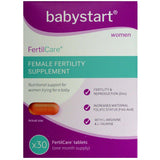






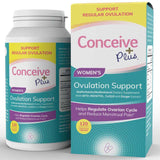








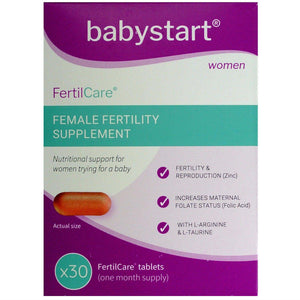






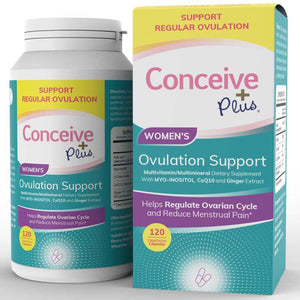
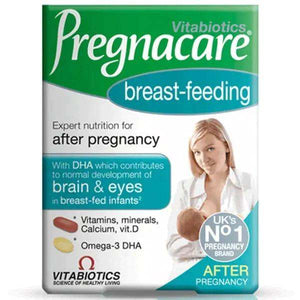









 Rated Excellent by 26,523+ Reviews
Rated Excellent by 26,523+ Reviews